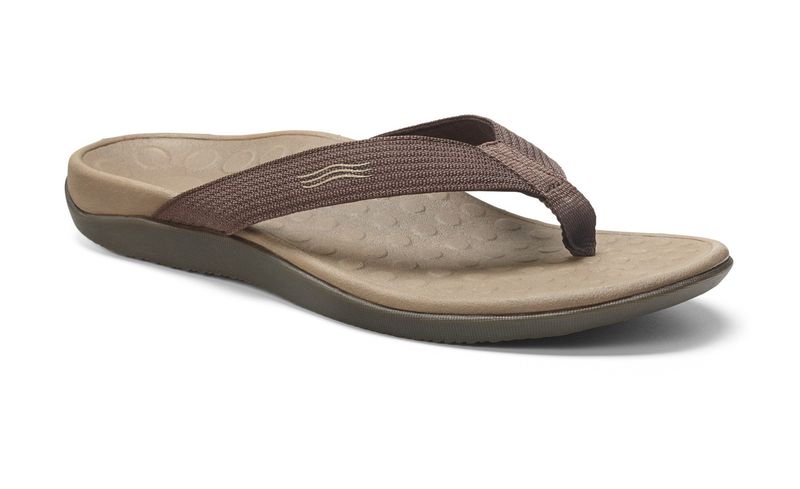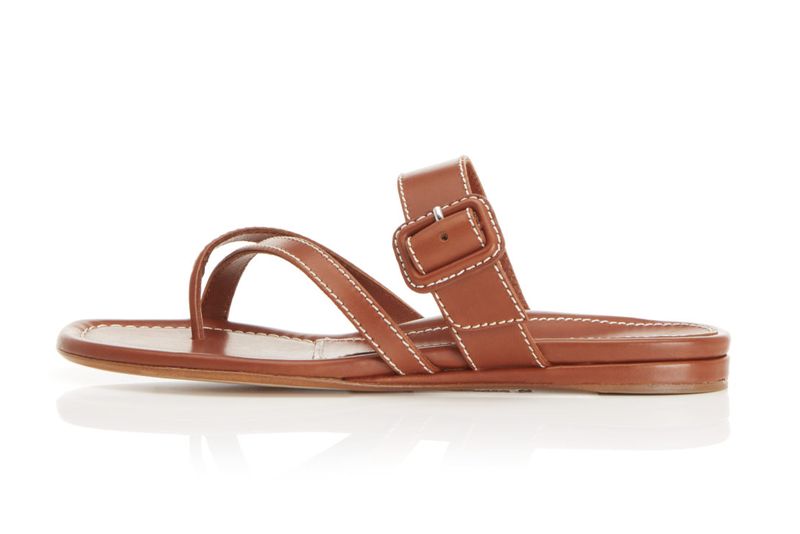Should You Be Barefoot All the Time in Quarantine?
Barefoot Contessa? More like, Arch Support Contessa.


Since staying at home became a mandate, it feels like we've declared that sweats are the new jeans and socks are the new shoes. But Marion Parke, podiatric surgeon and luxury footwear designer is ready to set us straight. “We do a lot more walking and standing at home than most of us realize; cooking, standing at the sink, chasing children, putting away laundry, going up and down stairs.” She adds, “Most people are surprised by how much walking they do while at home and how going barefoot at home can lead to problems such as plantar fasciitis, Achilles tendonitis, or something called metatarsalgia, which is essentially a focal or generalized pain in the forefoot where the metatarsal heads are found.”
So it turns out that the shoes we thought were so unnecessary now, actually are a major player in maintaining maximum comfort and avoiding pain in the long-term. Dr. Miguel Cunha, Founder of Gotham Footcare puts this pain into context: “Your feet are the foundation of your body similar to the foundation of a building. They are responsible not only for holding up the weight and determining stability of the body, but also in maintaining postural alignment of your ankle, knees, and back as we move from one point to another.” He warns, “Walking barefoot will increase laxity and weakness of the plantar fascia [the ligament that connects your heel to the front of your foot], which may result in pain and discomfort not only of the feet, but also of the entire body.”
Now here comes the kicker: you should probably be wearing shoes inside. But to be clear, shoes worn inside during this time should not be the same you are wearing outside at this time. The CDC recommends taking a disinfectant wipe to the shoe after contact with a potentially infected environment. But to play it safe, keep those by the door and your home shoes should be something that were either worn outside pre-quarantine, only in the confines of your home, or better yet, brand new.
The next step is establishing your foot type and determining what shoe is best for what kind of arches you have (high, low, regular). From there, Park has a simple mantra in shoe choice. “The best general principle is: more support is better than less.” But she advises not to go overboard on anything too cushy. “While a soft and flexible shoe sounds lovely, for the average foot, excess padding and flexibility will actually lead to soreness and fatigue over time.”
Below, check out our experts’ picks for every foot type and determine the most supportive shoe to wear during your time at home.

"When walking around the house indoors, I recommend the use of Vionic Sandals with Concealed Orthotic Arch to comfortably support and cushion your arch which can become aggravated especially when walking on hardwood or marble floors." – Dr. Miguel Cunha, Founder of Gotham Footcare

"If you have flat feet, you overpronate, which means your arch collapses more than it should. I recommended wearing this sandal for its arch support to minimize arch fatigue and discomfort, as well as a slight heel lift to reduce the stress and pain affecting the posterior tibial and achilles tendons, which is commonly associated with arch pain." – Dr. Cunha

"If you’re neutral, fortunately, with this type you distribute weight evenly across your feet so motion control and support is not critical as stability. This shoe is the most soft, lightweight, and flexible shoe as it can bend and twist more in the middle of the shoe." – Dr. Cunha

"Every shoe in my collection is built with a contoured insole, including an arch support and medical grade material for cushioning. These are my personal favorite to wear inside right now." –Marion Parke, podiatric surgeon and luxury shoe designer
Get exclusive access to fashion and beauty trends, hot-off-the-press celebrity news, and more.
Julia Gall is the former Style Director at Marie Claire, covering all things fashion, as well as styling tips, wardrobe upkeep and sustainability. Check her out at @juliasgall.


